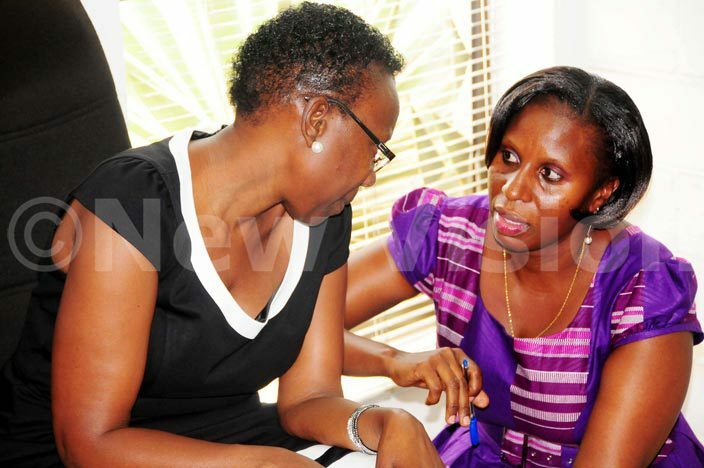Govt introduces new injectable polio vaccine
The new vaccine will also aid the withdrawal of Oral Polio Vaccine (OPV) in a phased manner, starting with the switch from trivalent OPV to bivalent OPV
As part of Uganda's Polio endgame, Government has introduced a new injectable polio vaccine (one dose of inactivated Polio Vaccine-IPV) into the current routine immunisation exercise that is meant to strengthen routine immunisation services.
According to Jane Ruth Aceng, the Director General of Health Services at the Ministry of Health the new vaccine will also aid the withdrawal of Oral Polio Vaccine (OPV) in a phased manner, starting with the switch from trivalent OPV to bivalent OPV.
Andrew Bakainaga the World Health Organisation (WHO) Country Advisor explained that introducing at least one dose of IPV will ensure that a substantial proportion of the population is protected against type-2 polio after the trivalent OPV withdrawal.
On Wednesday,Bakainaga said IPV will also boost the immune response to OPV serotype 1 and 3 which are still in circulation in Uganda.
He said though the country has for the past 10 years not had any polio cases caused by serotype 2, its vaccine would still be contained in the injectable vaccine.
Uganda plans to eradicate polio by 2018 and replacing OPV with IPV which has three types of vaccines that give stronger immunity against the disease is one of the targets the ministry of health intends to achieve. IPV targets children between zero to 11 months.
"A single dose of IPV will be given at 14 weeks or at firs contact if the child does not receive the dose at 14weeks. All children who are behind on their schedule will also receive one dose of the IPV at the first immunisation contact," Aceng said.
 Ministry Of Health Spokesperson (R) Rukia Nakamatte speaks to the Director General of Health Services Dr Jane Ruth Aceng during a media brief on the polio immunization at the Media center on 20th Mar 2016.
Ministry Of Health Spokesperson (R) Rukia Nakamatte speaks to the Director General of Health Services Dr Jane Ruth Aceng during a media brief on the polio immunization at the Media center on 20th Mar 2016.
Currently, the country's coverage for polio is at 100percent and since 2010, there has been no report of any wild polio virus, a clear indication that the country is on the right track and is able to deliver on its commitment.
Starting April next month, Aceng said a number of activities have been lined up to sustain and eradicate polio from the globe.
They include; National House to House Polio Campaign for all children less than five years from 1 -3 and IPV on 18 April.
Thereafter, a sub national House to House Polio campaign shall take place in 61 high districts for children under five years from 23 -25 and a Switch from the trivalent OPV to bivalent OPV on the 29 April.
The districts include Adjumani, Alebtong, Amolator, Amuru, Apac, Arua, Bududa, Bugiri, Bukwo, Bulambuli, Buliisa, Bundibugyo, Buyende, Dokolo, Hoima, Ibanda, Iganga, Isingiro, Jinja, Kaabong, Kabale, Kabarole, Kaliro, Kampala, Kamuli, Kamwenge, Kanungu, Kapchorwa and Kasese.
Other districts include Kiryandongo, Kisoro, Kitgum, Koboko, Kole, Kween, Kyegegwa, Kyenjojo, Lamwo, Lira, Luuka, Manafwa, Maracha, Masindi, Mayuge, Mbale, Moyo, Nakapiripirit, Namayingo, Nebbi, Ntoroko, Otuke, Oyam, Rakai, Rukungiri, Sironko, Wakiso, Yumbe and Zombo.
The total cost for the mass polio immunisation campaign activities is sh32bn. IPV alone is set to cost sh8bn of which the Global Alliance for Vaccines Initiative (GAVI) is expected to cover half of the amount. Other partners in the polio drive include WHO and UNICEF.
"Following the immunisation process, an independent external monitoring team shall visit all the districts on 30 April to verify that we have successfully switched from tOPV to bOPV," She said.
After the campaign, surveillance activities will be intensified to ensure that any case of acute flaccid paralysis is identified and the cause ascertained, up to 2018 when the world is declared free of polio.
Completing the immunisation schedule helps a child to get adequate protection from all the immunisable diseases. A child should be immunized at birth, six weeks, 10 weeks, 14 weeks and nine months.
The ministry and WHO in 2002 increased the number of immunisable diseases in Uganda from the traditional six to eight before the baby is one year old. They include measles, polio, tuberculosis, whooping cough, tetanus, hepatitis B, influenza B and diphtheria.
Approximately 1.5 million babies are born in Uganda each year. The country spends over sh38.2b on immunization every year, sh26b of which comes from GAVI.